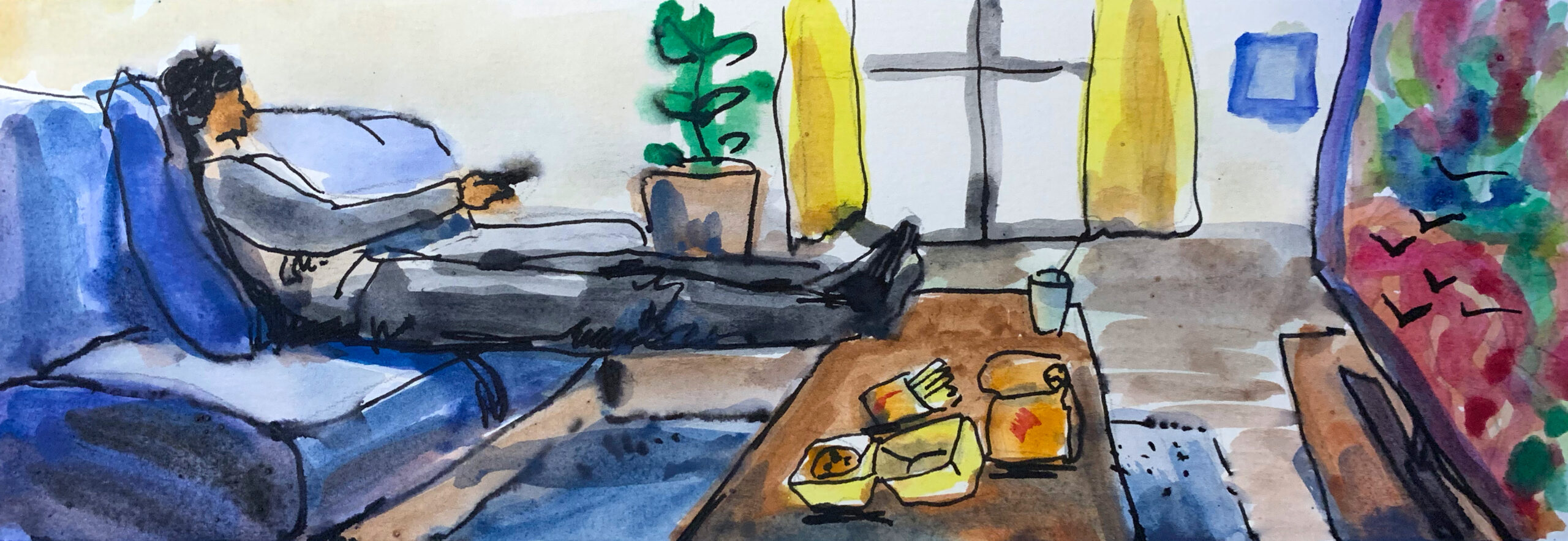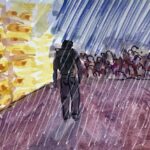Leslie Bary teaches Spanish and Latin American Studies at the University of Louisiana, Lafayette. Trained in Comparative Literature, she studies modern Spanish American and Brazilian Literature.
Although the boom of magical realism is long over in Latin America, this literary mode is still considered the signature of the Latin American writer in the Anglosphere.
It’s expected of them, as Alberto Fuguet discovered at the Iowa Writers’ Workshop in 1994. Can a Latin American author make an international career without it? Fuguet, and others, have been trying to find out. But in the English-speaking world mentions of Latin American writers who aren’t magical realists draw blank looks.
Take the work of Pergentino José, a trained literary critic, who works within the spiritual reality of Zapotec myth. Despite his statements to the contrary, his works are marketed in the U.S. as “contemporary magical realism.”
In this panorama, the diffuse term “magical realism” functions to obscure the work of an entire continent.
Magical realism is commonly described as the insertion of magical events, as though they had been real occurrences, in an otherwise realist narrative.
This conciliation of reason and dream has been celebrated, especially by English-speaking readers, as affirming realities beyond Western knowledge. Latin American critics promoted it in similar terms during the literary “Boom” of the 1960s and 70s, referring to a wide variety of post-realist, fantastic, and ethnographic texts as “magical realist.”
An influential 1955 article by the eminent scholar Angel Flores, itself an effort to clarify misconceptions, had characterized Latin American literature broadly as “magical realist” without discussing an author as seminal to the movement as Alejo Carpentier. Present-day scholars more often criticize magical realism as exoticizing Latin America by representing it as primitive, innocent, and doomed, and they emphasize that magical realism accounts for only a small part of Latin American literary production. Magical realism has nonetheless had a strong afterlife worldwide, and for Anglophone readers, it still defines Latin American literature.
Ignacio Sánchez Prado has discussed some intellectual problems created by Anglophone enthusiasm for Latin American magical realism, in combination with the neglect of Spanish and Latin American intellectual traditions. Due to the high demand for Spanish language courses in many institutions, when the teaching of Latin American literature is left to English departments, or when English as a discipline is accorded a level of intellectual authority Spanish is not, the perception of Latin America as a fount of magic—and not of analysis or theory—is strengthened.
The literary culture of our second national language is represented in terms corresponding to histories and intellectual agendas that are not its own. In this way, it’s placed under a kind of erasure: some works are used in translation, but the language, its practitioners, and its critics remain invisible.
Sylvia Molloy has observed that the representations of Latin America now deemed desirable in the Global North seem to involve the transculturation of the very foreign (the “magical”) with the modern West, in a way that makes the southern continent readable as part of a homogenous, global Other—to be consumed on-demand yet kept at a safe distance.
There are even related discussions of postcolonial writing in English, and the marketing of the East in the West. The appetite for magic further stems from the desire for enchantment among readers fatigued by modernity. But the insistence upon finding magic near or beyond the Equator (or the Global South) arises from a view that the languages of southern Europe and Latin America are devoid of intellectual traditions. From such perspectives, the literary and cultural histories of these peripheries can be ignored, while their “magic” is embraced.
Again, the most obvious problem with the popularity of magical realism and its identification with Latin America is that such enthusiasm obscures the large amount of Latin American writing that has not been added to the magical realist corpus. Even the most canonically “magical realist” writers have a great deal of other important work: Alejo Carpentier, for instance, composed several major novels in entirely different modes after The Kingdom of This World and War of Time.
Problematic as well is the expectation of exoticism that motivates the popularity of magical realism, not to mention the fact that non-Western knowledge, or non-Western religious experience, are not actually reducible to fancy.
Another problem, and an important one for history and interpretation, is that the term “magical realism” itself is of limited use when applied to writers as diverse as Jorge Luis Borges, an adept of the fantastic; Julio Cortázar, who experiments with time and narrative voice; and Juan Rulfo, whose Pedro Páramo combines realist and Gothic elements. Vargas Llosa is decidedly realist, and the “indigenous” narrative in The Storyteller–the only one of his novels those who would call him a “magical realist” appear to be aware of–is a parody of indigenous literature and indigenista work. García Márquez’s Chronicle of a Death Foretold has no magical elements, a fact Salman Rushdie glosses over in an influential review where he discusses magic realism as a mode “that expresses a genuinely ‘Third World’ consciousness.” The mode has certainly been used in that attempt, but the habit of seeing magic where it’s not distracts from interpretation–and from reading.
For a reader like Salman Rushdie, magical realist writing meets us in Western modernity but carries traces of older, non-Western voices. The genre thus embodies the tension between disparate cultural worlds that is characteristic of colonial situations. For a Latin Americanist, the problem with such enthusiasm for a global magical realism corresponding to a global post-coloniality is that coloniality and modernity in the Iberian world did not develop on the same trajectory as they did in the British colonies. To throw off a weakened Spain, as most of Latin America did in 1810, and to reform one’s country according to Enlightenment ideals, is a very different experience from gaining independence in the twentieth century after British colonization in the eighteenth, as with India, or the late nineteenth, as with much of Africa.
By the time magical realism appeared, Latin America already had a long tradition of hybrid texts, and magical realism was one literary mode among many. To claim it is the only one this continent has, distorts Latin American Histories and literary traditions. Such abstraction from its contexts and intertexts impoverishes the genre itself, stripping layers of meaning away. In being made universal, magical realism becomes, as Molloy puts it, “a regional, ethnicized commodity, a form of essentialized primitivism.”
The project of magical realism in Latin America was also part of a question, as González Echevarría emphasizes, “about the place of the New World in the scheme of universal history.” Could non-Western origins and colonial history be melded with distinctly modern cultural forms? Could myth and history be aligned? Might the New World offer a different, more satisfying modernity than the soul-crushing European one, that had devastated cultures and now brought destruction home, in the form of trenches and camps?
Growing from this background, Latin American magical realism sought to imagine the joining of worlds. In this sense, it works with the idea of cultural confluence (or transculturation), where non-Western elements mark and remake Western culture.
Magical realism as a Latin American literary endeavor, furthermore, was not about decolonization, but about entering a post-modernist literary market with a product that was both distinctly Latin American and competitive internationally.
If magical realism was aligned with transculturation as a project, more recent scholars consider Latin American culture to be heterogeneous rather than syncretic. This heterogeneity involves more than two elements, and it is not dialectical: contradictions are not resolved but remain as doublings, fissures, and fractures.
Just as mestizaje does not necessarily lead to the creation of a new, coherent culture, transculturating representation has not necessarily brought meaning, nor inaugurated an alternative modernity. In fact, it depends upon the subordination of indigenous cultures to modernization.
The topic of One Hundred Years of Solitude, of course, is the loss of magic. In Latin America, the texts associated with magical realism are classics, but their writing is not necessarily a praxis of liberation.
Leslie Bary teaches Spanish and Latin American Studies at the University of Louisiana, Lafayette. Trained in Comparative Literature, she studies modern Spanish American and Brazilian Literature.
Art by Michelle Huang. Michelle read this piece and designed an original painting for Conceptions Review. She drew inspiration from a line in Alberto Fuguet’s article, “my own world is something much closer to what I call ‘McOndo’ — a world of McDonald’s, Macintoshes, and condos.” Michelle is an artist from Sugar Land, Texas, now based out of New York, New York. She specializes in oil painting, known for her expressionist style in both figurative and abstract work. Her website is https://mhuangart.com.
Launched in March 2021, Conceptions Review is interested in the ideas people have about society and the consequences of these ideas. We seek accessible and standalone articles about conception-bending ideas and popular misconceptions. We are open to fields ranging from musicology to history to mathematics to insectology and everything in between.


